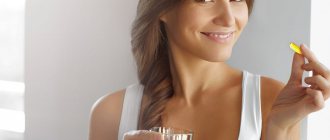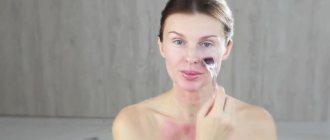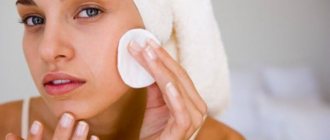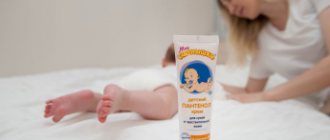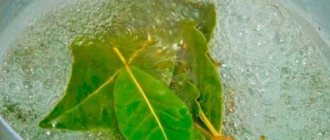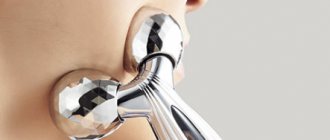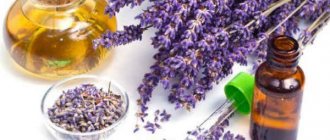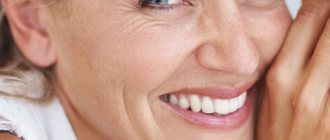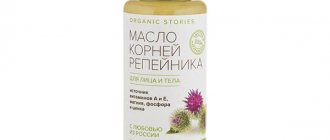- Indications
- Contraindications
- Peculiarities
- Kinds
- Stages
- Actions
- Side effects
- Rehabilitation
- Independent use
- pros
- conclusions
The cosmetology market offers various types of peelings for skin renewal. One of the most promising pharmaceutical agents is azelaic acid, which is included in many medications and, through chemical exfoliation, eliminates skin imperfections and initiates natural rejuvenation processes. The procedure has variations that are taken into account depending on the initial state of the epidermis and the expected results.
What is azelaine peeling?!
Azelaine peeling is a subtype of superficial chemical peeling for gently cleansing the skin and resolving some dermatological problems. The main component of the composition is natural azelaic (nonandioic, 1.7-heptane dicarboxylic) acid, which belongs to the group of dibasic saturated carbon compounds and is obtained by oxidative ozonation of oleic or linoleic acids, and is also found in wheat and barley. The substance normalizes metabolic processes and restores the cellular structure of the skin.
Peeling with azelaic acid: effective skin cleansing
Azelaic acid for skin cleansing - peeling
Peeling with the addition of azelaic acid is an effective way to get rid of acne, discoloration and even inflammation of the hair follicles. Peeling allows you to cleanse the skin, regulate the functioning of the sebaceous glands, eliminate existing discolorations and prevent the appearance of new ones, narrow pores, improve the overall structure, condition and color of the skin.
A series of treatments performed at home or in a beauty salon can effectively improve skin tone and reduce acne symptoms. In addition, azelaic acid stimulates the process of cell renewal, which leads to skin rejuvenation and smooth out wrinkles.
Indications for azelaine peeling
- Inflammatory and non-inflammatory forms of acne as part of complex therapy.
- Oily and seborrheic skin, enlarged pores.
- Demodicosis is an acne disease caused by skin mites.
- Folliculitis is an infection of the hair follicles.
- Hyperpigmentation of various origins: melasma, chloasma, lentigo, freckles.
- Prevention and correction of chrono- and photoaging: wrinkles, sagging, decreased tone, dryness, gray complexion.
- Sensitive skin with a tendency to peeling and redness.
- Cuperosis is a vascular “mesh”.
- Hyperkeratosis is a thickening of the upper layer of the epidermis.
- Skin defects: ingrown hairs, small scars, scars on the face and body.
- Preparation for serious cosmetic procedures: laser resurfacing, microdermabrasion, deep peelings and cleansing.
Contraindications for azelaine peeling
- Pregnancy, lactation.
- Increased body temperature.
- Acute inflammatory and infectious processes: herpes, pyoderma, microsporia.
- Malignant and multiple benign neoplasms.
- Severe damage to the cardiovascular, urinary and digestive systems.
- Damage to the skin: wounds, burns.
- Exacerbation of chronic dermatoses: psoriasis, eczema.
- Increased skin insolation.
- Constant use of hormonal medications, systemic and topical retinoids.
- Autoimmune diseases: systemic lupus erythematosus, scleroderma.
- Individual intolerance to ingredients.
Features of azelaic acid
- It is combined in peelings with mandelic, lactic, salicylic, and glycolic acids to enhance the effect and solve the assigned problems.
- Regulates the level of acidity in cosmetic products, therefore it is successfully used in cosmetology.
- It does not cause resistance to pathogenic microorganisms even with constant use, so courses of procedures are highly effective.
- It has a gentle exfoliating effect, not a scraping effect, unlike other fruit acids, so it is suitable even for sensitive skin.
- It has great “penetrating” ability, passes between the cells of the stratum corneum and quickly cleanses the skin.
- Reduces the activity of 5-alpha reductase and polyunsaturated fatty acids, therefore reducing excess sebaceous secretion.
- Azelaic acid derivatives in cosmetology are water-soluble, chemically stable compounds with improved whitening properties.
- It is perceived by the skin as a related chemical compound, since it is formed in small quantities as a result of fat metabolism and is found in epidermal cells.
Azelaic acid for rosacea and teenage acne: how does it work?
Azelaic acid is one of the few medicinal substances that can improve the condition of the skin not only with acne in adolescents and adults, but also with rosacea. It is a chronic skin disease (acne) that mainly affects the central part of the face and is characterized by erythema, papules and pustules, and telangiectasias.
- Azelaic acid effectively reduces erythema and slows the progression of inflammatory lesions in rosacea without compromising the skin's protective barrier or causing irritation.
- It is believed that it can successfully replace metronidazole therapy.
- Due to the fact that this substance also has antioxidant properties, the treatment will have a positive effect on the skin condition of those people who show signs of skin photoaging.
- Azelaic acid reduces the appearance of blemishes and also gives the face a more radiant and rested appearance.
This remedy also regulates the process of keratinization of the epidermis, which makes it suitable for the treatment of abnormal or solar keratosis.
Types of azelaine peeling
By the nature of the impact.
- Classic - exfoliation of the top layer of skin for a superficial effect.
- “Dry” - dehydration of the outer layer of the epidermis with subsequent removal of peeling in the form of a film for a median effect.
According to the form.
- Gel - for uniform and external distribution of components in tissues.
- Aqueous-alcoholic - for deeper skin effects.
Multi-acid all-season gel with azeloic acid is presented in the MESOMATRIX OILY BALANCE non-invasive carboxytherapy system.
TREATMENT AND CARE STRATEGY FOR PROBLEM SKIN
Proper cosmetic care for acne-prone skin has its own laws and consists of several necessary stages. Special care cosmetics should:
- relieve inflammation, - restore the skin barrier, - regulate sebum production, - effectively and long-lastingly moisturize the skin, - protect from ultraviolet radiation, - fight pathogenic bacteria, - help the beneficial skin microbiome.
The good news is that the products from the Seratsin LIBREDERM collection cover all these needs and are excellent for acne. It is important to learn how to use them correctly. For example, in the morning you need to first cleanse your face with a cleansing gel, apply a mattifying serum in the afternoon that fits well on top of cosmetics, and in the evening treat it with a night cream that normalizes the functions of the dermis during sleep. You can choose other items from the line, but the stages of care should take place in this order.
Stages of azelaine peeling
- Consultation and examination - collecting anamnesis, identifying contraindications, designating a treatment regimen.
- Preparation - use of moisturizing creams with 5-10% AHA acids to adapt and smooth the skin 10-14 days before the start of the course.
- Sensitivity test - applying an exfoliant to the crook of the elbow for 30 minutes to detect allergic manifestations.
- Cleansing before peeling - removing impurities using milk or foam with natural moisturizing ingredients.
- Degreasing - rubbing with lotion with 3% glycolic acid to enhance penetration of ingredients.
- Protect mucous membranes, lips, and corners of the eyes with special preparations containing petroleum jelly or silicone polymers to prevent acid from entering vulnerable areas.
- Peeling - treatment of the skin with 15-30% azelaic acid with pH 1.8-3.0 in 1-3 layers by massaging for 5-10 minutes from the periphery to the center: forehead, temples, cheeks, chin, eyelids, nose, nasolabial triangle. The exposure time and number of layers may vary depending on the type of preparation.
- Removing the composition with cool water.
- Applying soothing agents - licorice extract, retinol, vitamin E and sunscreen.
How to use azelaic acid preparations: what can they be combined with?
If there are no specific recommendations regarding the use of azelaic acid cream or ointment, the drug should be applied to the facial skin 1-2 times a day until the desired result is obtained. You can also use a drug with azelaic acid (especially its high concentration) alternately with a moisturizer. For severe seborrhea, a remedy with this substance can be used twice a day.
The first effects of treatment or care with products containing azelaic acid should be noticeable after a few sessions or approximately 6-8 weeks.
It is worth remembering: Although the substance does not irritate the skin even after prolonged use, products containing it are not recommended for use for more than 6 months . It is also better if the entire course of azelaic acid therapy is carried out under the supervision of a dermatologist.
Azelaic acid does not need to be used alone - it can and should be combined with other treatments or medications. Thanks to this, the antibacterial, anti-inflammatory, whitening or exfoliating effect of the entire treatment will be even better.
The use of azelaic acid can be combined with the following:
- Antibiotics (for internal and external use), which will reduce the risk of bacteria formation and shorten the duration of treatment.
- Hormonal treatment is always carried out under the supervision of a doctor. This combination is a popular method of fighting acne.
- Benzoyl peroxide - azelaic acid will enhance the antibacterial effect of this substance.
- Tretinoin - to enhance its keratolytic effect.
- AHAs and BHAs - Combining azelaic acid with salicylic, lactic or glycolic acids can be especially beneficial for our skin.
Remember: If you want to combine azelaic acid with other substances, you must apply them at appropriate intervals, for example, azelaic acid products in the morning and the rest in the evening.
The way we use products may change, especially if the products we choose are not phototoxic. However, if you have any doubts about the combination of azelaic acid and other substances, consult a dermatologist or cosmetologist.
Here is a list of azelaic acid preparations - effective and excellent for various skin problems:
- Azelik gel
- Azix-derm, cream
- Skinoclear gel 15%, 20%
- Skinoren gel
- Skinomax gel
- Azogel
- AcneStop
- Finacea gel
Of course, there are other drugs, but they are little known and may not be sold in pharmacies. These are always in stock and available without a prescription.
Actions of azelaine peeling
- Anti-inflammatory - reduces painful rashes and prevents redness from recurring in the skin and hair follicles.
- Sebum regulating – normalizing the functioning of the sebaceous glands, reducing acne and enlarged pores.
- Keratolytic - stimulation of exfoliation of the stratum corneum, inhibition of keratinocyte growth and cleansing of pores.
- Antiseptic - stopping the spread of harmful microorganisms - fungi and bacteria, preventing infection of the skin.
- Whitening - regulation of the distribution and production of melanin.
- Antioxidant - neutralizes toxins and free radicals.
- Renewing - normalization of microcirculation processes and strengthening of blood vessels.
- Regenerating and rejuvenating - restoring cell division, stimulating barrier structures, increasing tone, reducing wrinkles and evening out tone.
Course of procedures
The basic duration of sessions is 5-12 procedures with an interval of 1 time every 7-14 days. The technique can be repeated after 2-4 months, depending on the condition of the skin and the goals being achieved. Maintenance course - once every 6-8 months.
Side effects
Immediate (2-4 weeks after procedure):
- Dry skin after azelaine peeling is a natural reaction to the action of the peeling. It is removed with soothing gels, masks with aloe, collagen, and chamomile extracts.
- Swelling is an expected manifestation of the composition. Corrected with moisturizing preparations with antioxidant substances.
- Exacerbation of herpes infection - occurs due to individual characteristics or incorrectly collected anamnesis. Controlled by prescribing antiviral drugs.
- Attachment of a secondary infection - manifests itself due to non-compliance with recommendations or violation of antiseptic rules during the procedure. Antibacterial drugs are prescribed.
- An allergic reaction is a response mechanism to the penetration of azelaic acid in the absence of a preliminary sensitivity test. Antihistamines and local regenerating substances are taken.
- Erythema is post-peeling redness of the skin, which is observed within 2-3 hours. In case of persistent manifestations, procedures are carried out to normalize microcirculation in skin cells.
- Hyperpigmentation is a rare undesirable manifestation that occurs when the steps of the procedure are not followed.
- Exacerbation of acne is a possible consequence, which disappears on its own 2-3 months after peeling. Additionally, anti-inflammatory gels (Skinoren, Kuriosin) are prescribed.
Persistent (4-10 weeks after using azelaine peeling) - keloid scars, depigmentation - occur due to internal disruptions in the body, incorrect medical history, and ignoring the recovery period. Restorative drugs and procedures are used.
Rehabilitation period
- Do not apply decorative cosmetics for 24-48 hours.
- Do not visit the bathhouse, swimming pool, sauna, or solarium for 14 days.
- For 5-14 days, use light texture care products to moisturize.
- For 7-15 days, cleanse the skin with milk, foam with aloe extract, collagen, chamomile.
- Apply regenerating and restorative components for 3-5 days.
- For 5-10 days, do not carry out aggressive procedures: scrubs, polishing.
- Always use sunscreens with an SPF of 30 or more. For example, cream block for tanning and age spots, SPF 45.
Does azelaic acid help: effect on facial skin, how does it work?
Azelaic acid
Azelaic acid (AZA) is a multidirectional dicarboxylic acid that is widely used in cosmetics. She really helps. Here is its effect on the skin, how it works:
- It has anti-inflammatory properties - reduces the risk of infection and post-inflammatory scars.
- Has an antibacterial effect - against anaerobic bacteria.
- It has a bactericidal effect on Propionibacterium acnes, the bacteria responsible for the formation of acne.
- Regulates the functioning of the sebaceous glands - suppresses excessive secretion of sebum, reducing oiliness and radiance of the skin.
- Blocks the formation of melanin, responsible for uneven skin tone.
- Reduces excessive keratinization - reduces blackheads and unclogs pores.
- Gently exfoliates dead skin cells.
- It has an antioxidant effect - neutralizes the effects of free radicals, protects the skin from premature aging.
Azelaic acid is naturally produced by the yeast Malassezia furfur , which is part of the physiological flora of the skin. It is also found in plants: barley, wheat. Since its poor solubility in water is a big obstacle for technologists developing the composition of cosmetic preparations, research is being carried out to create its derivatives, such as azeloglycine.
Self-use of azelaine peeling
- At home, azelaic acid is used in low concentrations - up to 15%.
- A preliminary consultation with a doctor is carried out to determine the type of procedure and identify possible allergic manifestations.
- The skin is cleansed and degreased with a glycolic acid-based tonic under sterile conditions.
- The delicate areas around the treated areas are protected with Vaseline.
- Azelaine peeling is rubbed into the skin with massage movements for 10 minutes, then washed off with chilled water.
- After the procedure, moisturizers are used and generally accepted post-care recommendations are followed.
Advantages of azelaine peeling
- Versatility - carried out for any phototype.
- All-season - does not increase skin sensitivity to sunlight.
- Highly effective with repeated use - no pathogenic microorganisms resistant to peeling.
- Atraumatic and delicate impact.
- Availability and ease of use.
- Activity and safety.
- Short recovery period.
- Well tolerated - azelaic acid is a natural substance for the body.
Minuses
- Course methodology.
- There is a risk of side effects.
- Low effectiveness for severe and progressive skin defects.
Azelaic acid: an effective remedy for acne and post-acne
Azelaic acid
Acne on the face, back, shoulders and other parts of the body can be called a problem of modern society. More than 40% of the world's population suffers from this pathology 10% require specialized treatment. Moreover, this is a disease that affects not only teenagers, but also many adults (in this case we are talking about the so-called acne in adults).
- Azelaic acid is a substance that has always been used in the treatment of acne - both in professional treatment and during home care.
- It gives very good results, especially in the treatment of moderate acne, the effectiveness is comparable to the results from retinoids.
- Also, this substance perfectly relieves post-acne.
Due to its anti-inflammatory, bactericidal and exfoliating properties, azelaic acid is used to treat both local superinfections and severe cases of juvenile acne.
It is worth noting: During treatment, it works with the same efficiency all the time, and the bacteria present in our skin (responsible for the development of acne) cannot be immunized from the effects of the substance.
Azelaic acid also inhibits the conversion of testosterone to DHT, which leads to limited functioning of the sebaceous glands, as well as to the absence of symptoms of the disease and exacerbation. Thanks to its exfoliating properties, it also works against blackheads, resulting in even faster improvement in skin condition. Azelaic acid exfoliates dead epidermal cells and thus prevents clogging of the sebaceous glands and the accumulation of bacteria in them.
